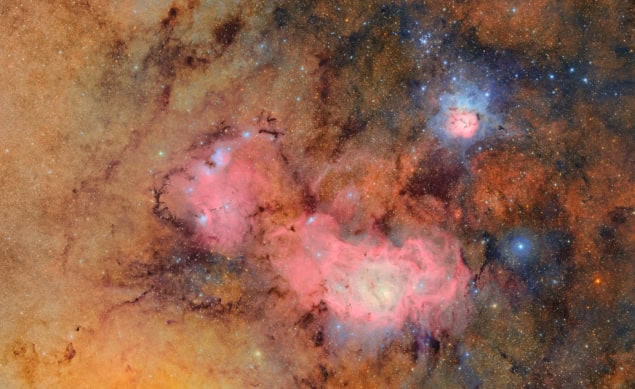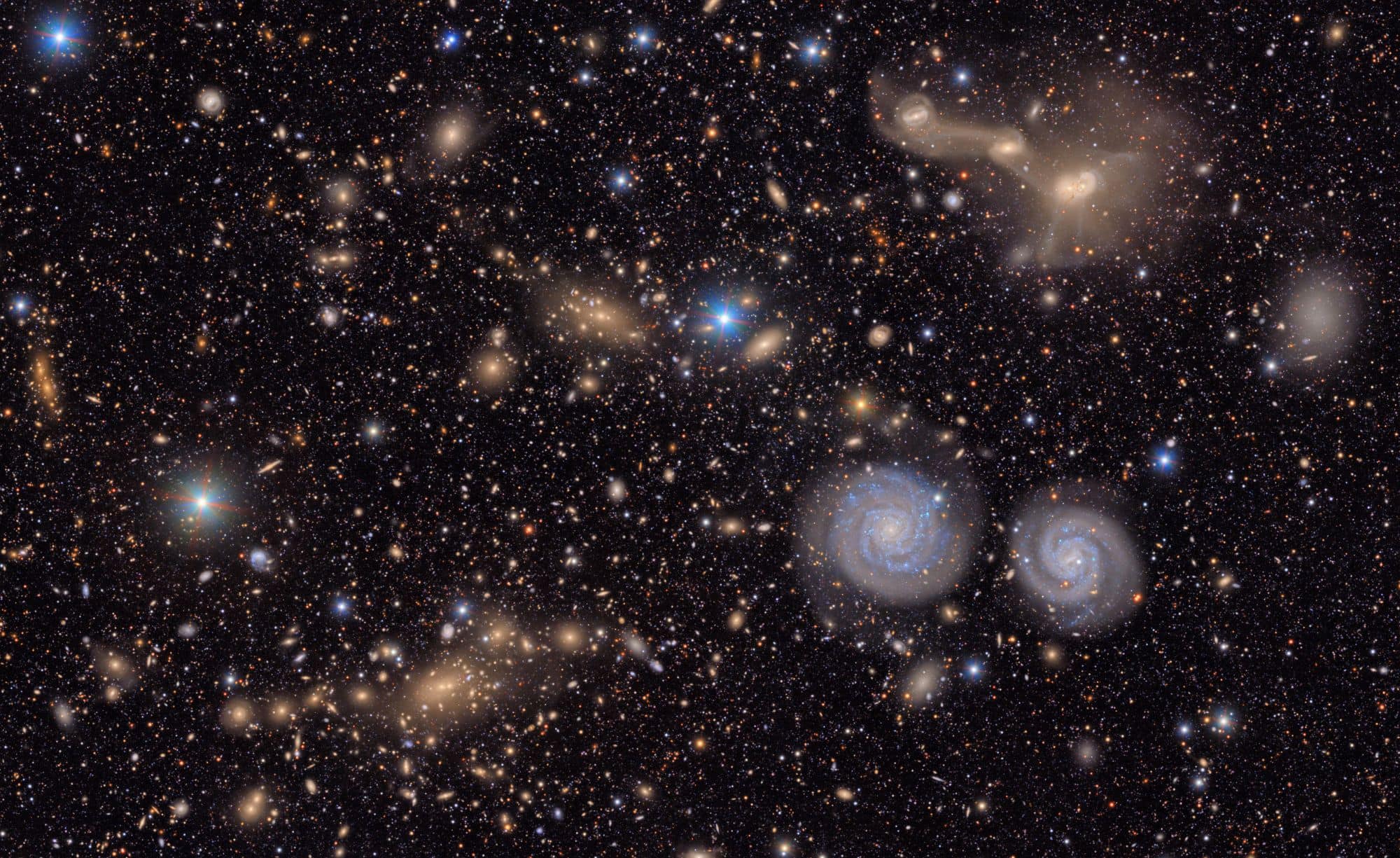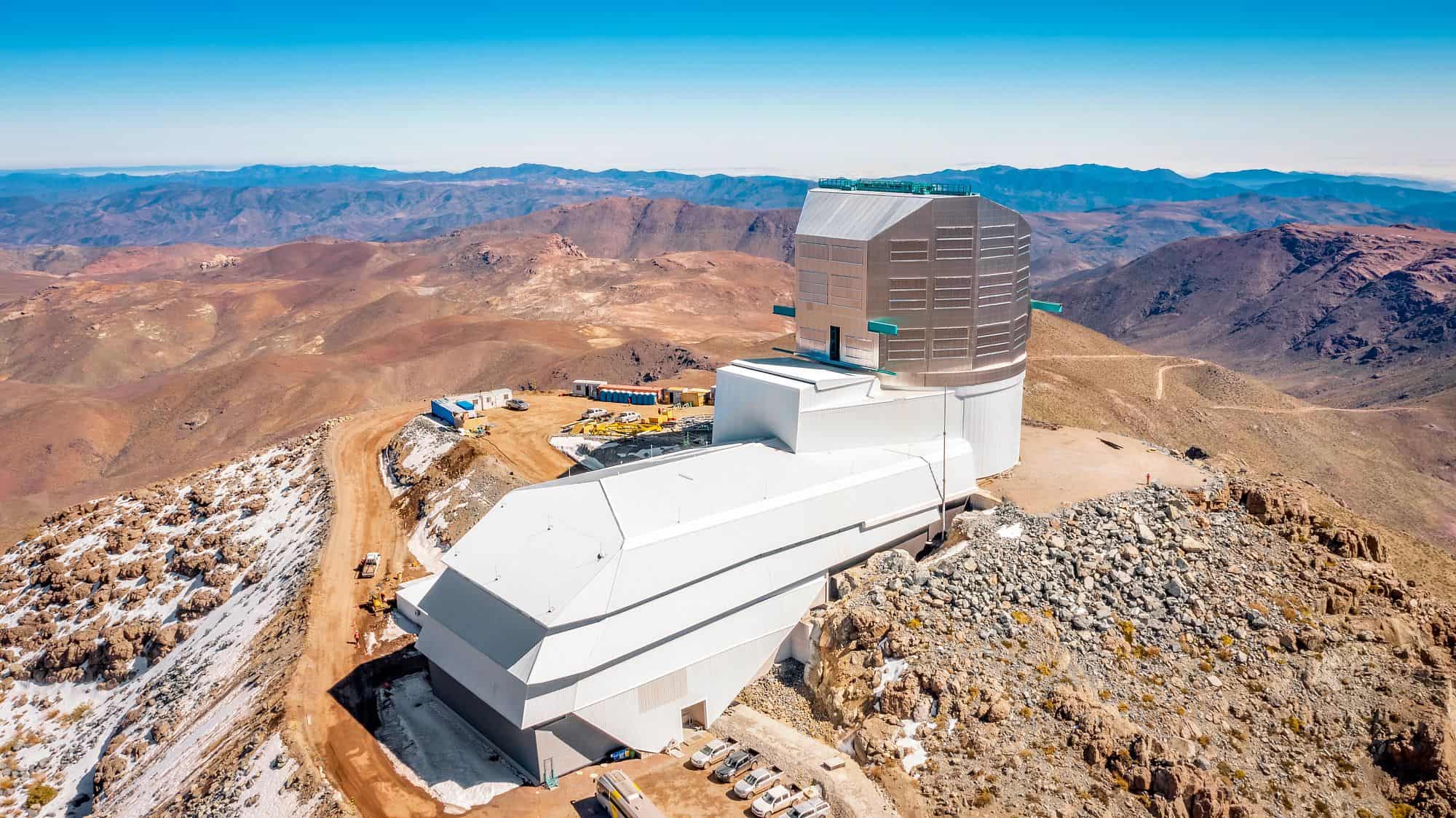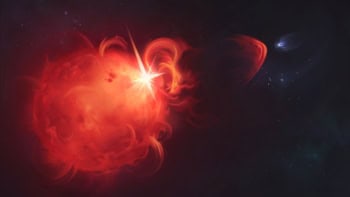
The first spectacular images from the Vera C Rubin Observatory have been released today showing millions of galaxies and Milky Way stars and thousands of asteroids in exquisite detail.
Based in Cerro Pachón in the Andes, the Vera C Rubin Observatory contains the Legacy Survey of Space and Time (LSST) – the largest camera ever built. Taking almost two decades to build, the 3200 megapixel instrument forms the heart of the observatory’s 8.4 m Simonyi Survey Telescope.
The imagery released today, which took just 10 hours of observations, is a small preview of the Observatory’s upcoming 10-year scientific mission.
The image above is of the Trifid and Lagoon nebulas. This picture combines 678 separate images taken by the Vera C Rubin Observatory in just over seven hours of observing time. It reveals otherwise faint or invisible details, such as the clouds of gas and dust that comprise the Trifid nebula (top right) and the Lagoon nebula, which are several thousand light-years away from Earth.
The image below is of the Virgo cluster. It shows a small section of the Virgo cluster, featuring two spiral galaxies (lower right), three merging galaxies (upper right) and several groups of distant galaxies.

Star mapper
Later this year, the Vera C Rubin Observatory, which is funded by the National Science Foundation and the Department of Energy’s Office of Science, will begin a decade-long survey of the southern hemisphere sky.
The LSST will take a complete picture of the southern night sky every 3-4 nights. It will then replicate this process over a decade to produce almost 1000 full images of sky.
This will be used to plot the positions and measure the brightness of objects in the sky to help improve our understanding of dark matter and dark energy. It will examine 20 billion galaxies as well as produce the most detailed star map of the Milky Way, imaging 17 billion stars and cataloguing some six million small objects within our solar system including asteroids.
Cosmic pioneer

The observatory is named in honour of the US astronomer Vera C Rubin. In 1970, working with Kent Ford Jr, they observed that outer stars orbiting in the Andromeda galaxy were all doing so at the same speed.
Examining more galaxies still, they found that their rotation curves – the orbital speed of visible stars within the galaxy compared with their radial distance to the galaxy centre – contradicted Kepler’s law.
They also found that stars near the outer edges of the galaxies were orbiting so fast that they should be falling apart.
Rubin and Ford Jr’s observation led them to predict that there was some mass, dubbed “dark matter”, inside the galaxies responsible for the anomalous motions, something their telescopes couldn’t see but was there in quantities about six times the amount of the luminous matter present.



